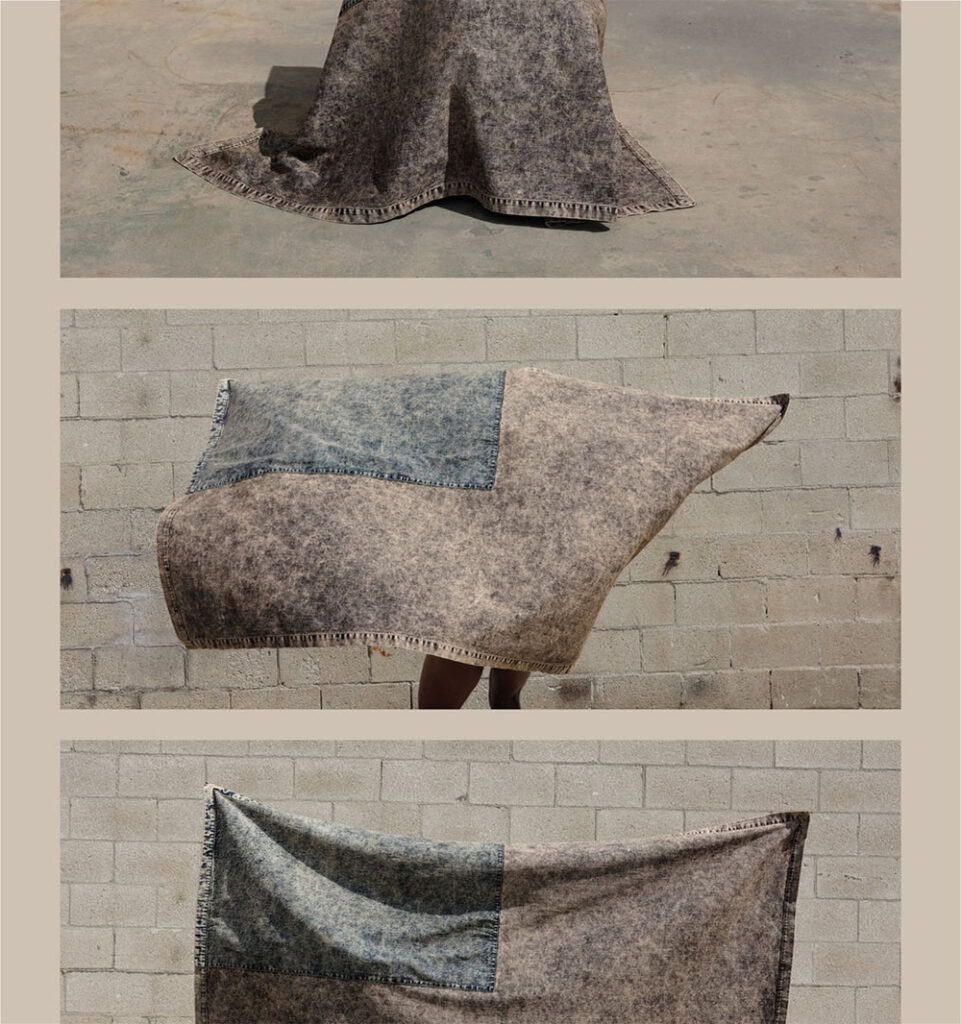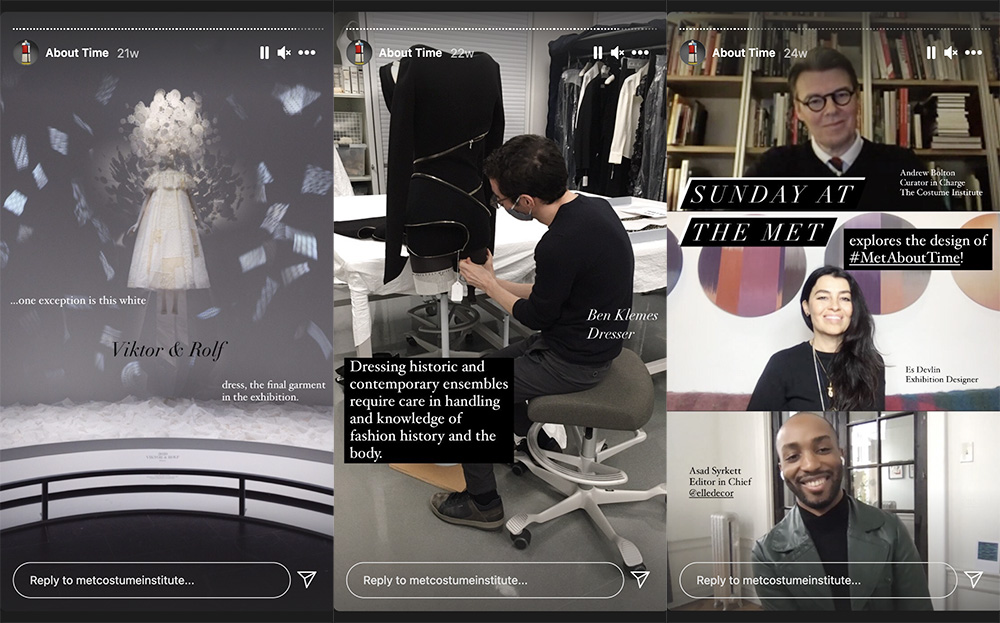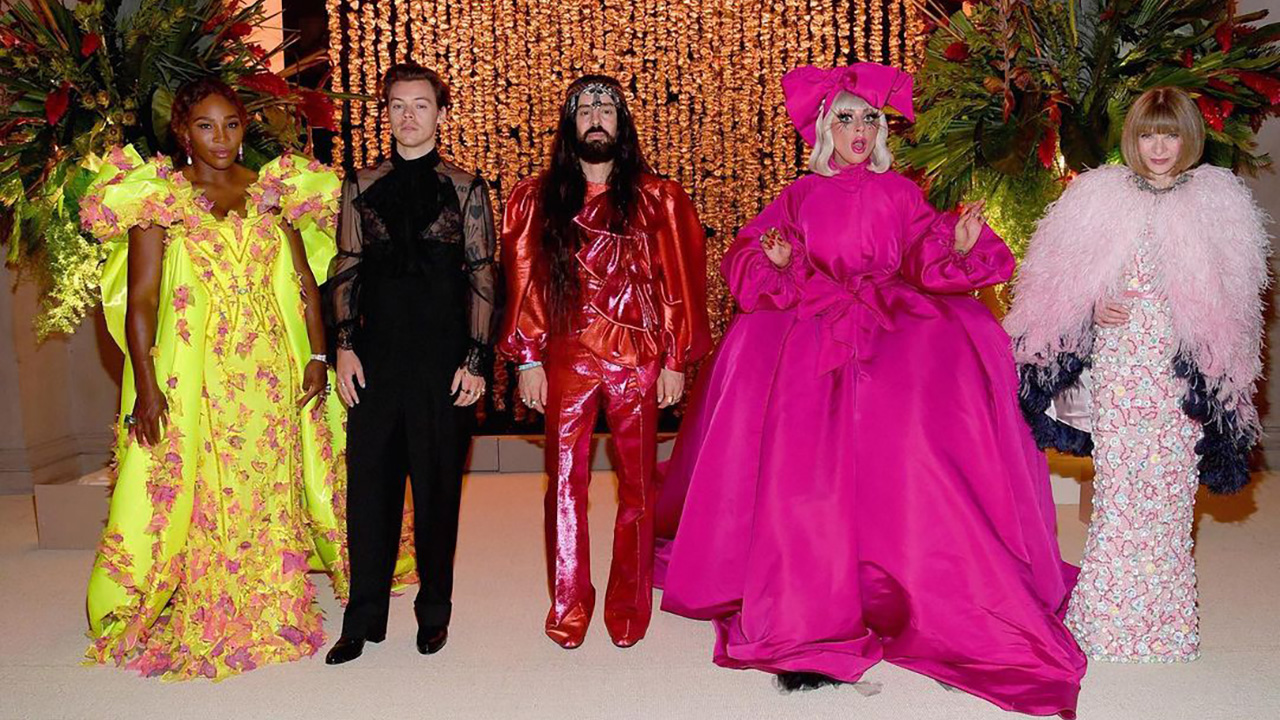In April, the Metropolitan Museum of Art announced the Costume Institute’s upcoming major exhibition, a two-parter exploring American fashion titled In America: A Lexicon of Fashion and In America: An Anthropology of Fashion.
Accompanying the September opening of the first show is the Costume Institute Benefit, widely referred to as the Met Gala, which will make its return in “intimate” form after being postponed last year due to the pandemic. Always an industry highlight, the event gathers some of the biggest names in fashion and pop culture (read: celebrities) under the Met’s roof. This year, leading with the theme of American fashion, the gala will be co-chaired by the likes of Billie Eilish, Timothée Chalamet, and Naomi Osaka, and interestingly and perhaps fittingly, sponsored by Instagram.

The two-part exhibition, In America, marks the Costume Institute’s 75th anniversary with an exploration of how fashion has impacted American life. Image: “Veil Flag” by S.R. Studio. LA. CA., 2020. Courtesy of Sterling Ruby Studio. Photography by Melanie Schiff.
Of course, the Met Gala has always relied on corporate sponsorships. But while fashion industry patrons like Donatella Versace and Gucci are expected, tech sponsors have been slowly getting involved in the past 10 years — from Amazon‘s sponsorship of 2012’s Schiaparelli and Prada: Impossible Conversations to Apple’s backing of both 2016’s Manus x Machina: Fashion in an Age of Technology and 2017’s Rei Kawakubo/Comme des Garçons. Instagram joins that line-up, marking one of the Met Gala’s most high-profile tech sponsorships.
Why it matters
The Met Gala is well aware of how social media can massively expand its reach: in 2019, it launched campaigns on Douyin to publicize its big night, a strategy that paid off in millions of views across two days. An Instagram sponsorship cements the event’s ties to social media and by extension, the vast audience on these platforms. And as global travel restrictions continue to limit museum visitorship, making a critical gala night digitally accessible for global viewers would be a boon for engagement.
Additionally, Instagram has only grown in stature within the art and museum spheres. In the past year, the app has increasingly become a research tool for art-buyers, and has been tapped by institutions to host virtual tours and livestreamed events like curator talks.

For its 2020 exhibition, About Time, the Costume Institute took to Instagram to engage socially distanced viewers with livestreamed talks, behind-the-scenes peeks, playlists, and virtual tours. Image: @metcostumeinstitute on Instagram
And that’s not mentioning how user behavior on the platform has shaped the way museums curate and operate. Before the pandemic, entire museums like the Museum of Ice Cream, prided on being “Instagrammable,” have surfaced. With exhibitions of works such as Yayoi Kusama’s “Infinity Mirrors,” arts organizations also demonstrate an understanding of how a “grammable” space translates into online engagement and in turn, foot traffic. As of writing, the #museum hashtag on Instagram hosts more than 21 million posts.
Sponsored museum events and exhibitions too have been gaining momentum, especially as museums struggle to recover financial and visitor losses following a pandemic year. Earlier in 2020, the Met anticipated a $150 million loss, temporarily closed all three locations, considered deaccessioning pieces from their permanent collections to raise maintenance funds, laid off some 80 employees, and announced executive pay cuts reaching 20 percent.
The institution’s partnership with Instagram, which has approximately one billion global users, will greatly expand the Met Gala’s digital audience, making it, according to a Met spokeswoman, “a great fit to sponsor this American-themed exhibition.” For the social media platform, itself already “a home for fashion,” attaching their name to such a defining, high-profile gala secures their cultural standing (head of Instagram Adam Mosseri will serve as a honorary chair at the event). While it awaits to be seen how this partnership bears out, it opens up the possibilities for Instagram’s future and deeper involvement in the museum space.



